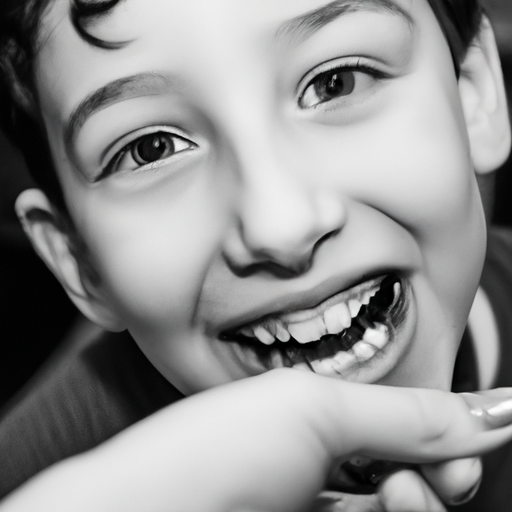- Today Offer: $20 OFF orders $300 or more with code “SNEAKER002” + Free shipping on orders over $60!


Orthodontics plays a crucial role in ensuring the oral health and well-being of children. As parents, it is essential to understand the ins and outs of orthodontic treatment, from diagnosis to treatment options and symptom management. In this comprehensive guide, we will delve into the world of orthodontics for children, shedding light on the causes of orthodontic issues and exploring the most effective treatment options available. Join us as we navigate the path to a healthy smile for your child, from diagnosis to brace selection, and beyond.
Orthodontics for children is a specialized branch of dentistry that focuses on diagnosing, treating, and preventing dental and jaw abnormalities in young patients. It plays a crucial role in ensuring proper oral health and development, as well as enhancing the overall well-being of children. In this comprehensive guide, we will delve into the various aspects of orthodontics for children, including diagnosis, treatment, symptoms, and causes.
Diagnosing orthodontic issues in children requires a thorough examination by an orthodontist. These specialists possess the expertise to identify and assess any dental irregularities, such as crooked or crowded teeth, misaligned jaws, or malocclusions (commonly known as "bad bites"). Diagnostic tools such as X-rays, photographs, and impressions aid in developing an accurate treatment plan tailored to each child’s unique needs.
When it comes to treatment, orthodontists utilize a variety of techniques and appliances to correct dental and jaw abnormalities in children. One of the most common treatments is braces, which consist of brackets, wires, and bands that gradually move teeth into their proper positions over time. Other appliances, such as expanders, headgear, or retainers, may also be recommended depending on the severity of the case. These treatments are typically carried out over a period of months or years, with regular adjustments and check-ups to monitor progress.
Symptoms of orthodontic issues in children can vary, but some common signs include difficulty biting or chewing, speech problems, mouth breathing, thumb sucking, grinding or clenching of teeth, and a noticeable asymmetry in the face or jaw. It is important for parents to be vigilant and consult an orthodontist if any of these symptoms are present. Early detection and intervention can prevent further complications and ensure optimal results in the long run.
The causes of orthodontic problems in children can be attributed to various factors. Some issues may be inherited, meaning they are passed down through family genetics. Other causes include early loss of baby teeth, prolonged use of pacifiers or thumb sucking, mouth breathing, oral habits like tongue thrusting, and poor dental hygiene. Understanding the underlying causes is essential for effective treatment and prevention strategies.
In conclusion, orthodontics for children is a specialized field that focuses on diagnosing, treating, and preventing dental and jaw abnormalities in young patients. Early diagnosis and intervention are crucial in ensuring proper oral health and development. By addressing orthodontic issues promptly, children can enjoy improved dental function, enhanced aesthetics, and increased self-confidence. Regular dental check-ups and open communication with orthodontic specialists can
Orthodontic issues in children can arise due to various causes, which can range from genetic factors to poor oral habits. Understanding the causes behind these problems is crucial for effective treatment and prevention.
One common cause of orthodontic issues in children is genetic inheritance. If a child’s parents have misaligned teeth, crowded jaws, or other dental irregularities, there is a higher likelihood that the child will also develop similar problems. Genetic factors can influence the size, shape, and position of the teeth, as well as the development of the jaw. In some cases, genetic disorders such as cleft palate or Down syndrome can also contribute to orthodontic issues.
Another cause of orthodontic problems in children is early loss of primary (baby) teeth. Premature loss can occur due to tooth decay, trauma, or extraction. When primary teeth are lost too early, it can disrupt the normal eruption and alignment of permanent teeth. This can lead to crowding, spacing issues, or misalignment. Therefore, it is important for parents to ensure that their children maintain good oral hygiene practices and receive regular dental check-ups to prevent premature tooth loss.
Harmful oral habits, such as thumb sucking, tongue thrusting, or prolonged pacifier use, can also contribute to orthodontic issues in children. These habits can affect the development of the jaw, causing it to grow in an abnormal position or altering the alignment of the teeth. If these habits persist beyond a certain age, they can lead to malocclusion and other orthodontic problems that require intervention.
Additionally, poor nutrition and diet can have an impact on the development of orthodontic issues in children. A diet lacking in essential nutrients, particularly during critical stages of dental development, can result in dental abnormalities. For example, calcium and vitamin D deficiencies can weaken the tooth structure, making them more prone to misalignment or decay. On the other hand, excessive consumption of sugary foods and drinks can lead to tooth decay and loss, which can subsequently affect the alignment of the remaining teeth.
Fortunately, there are various effective treatment options available to address orthodontic issues in children. The most common treatment is orthodontic braces, which can correct misalignment, overcrowding, and irregular bites. Braces work by gradually applying gentle pressure on the teeth to encourage them to shift into the desired position. Depending on the severity of the condition, braces can be worn for several months to a few years.
In some cases, early intervention using functional appliances may be necessary. These appliances are designed to modify the growth and development of the
Navigating the path to a healthy smile for your child involves several crucial steps, starting with the diagnosis of orthodontic issues. Orthodontics for children focuses on the correction of misaligned teeth and jaws, ensuring proper dental development and overall oral health.
The first step in this journey is the diagnosis. Orthodontists are specialized dentists who evaluate and diagnose any dental irregularities in children. They examine the child’s teeth, jaw alignment, and bite to identify any orthodontic problems. Common issues include crowded or crooked teeth, overbites, underbites, crossbites, and malocclusions.
During the diagnosis, orthodontists may use various tools and techniques. X-rays provide a detailed view of the teeth and jaw structure, helping to identify any hidden problems. Additionally, orthodontists may take impressions or digital scans of the child’s teeth to create models for further analysis.
Once the diagnosis is complete, the orthodontist will discuss the treatment options with you and your child. Treatment plans differ based on the severity of the orthodontic issue. Mild cases may only require the use of dental appliances, such as braces or retainers, to guide the teeth into proper alignment. In more severe cases, orthodontic intervention may involve additional techniques, such as jaw expansion or surgery.
Selecting the right braces for your child is an important decision. Traditional metal braces are a popular choice and have proven effective in correcting a wide range of orthodontic issues. These braces consist of metal brackets attached to the teeth, connected by wires that exert gentle pressure to move the teeth gradually.
For children who are conscious about their appearance, there are alternatives to traditional braces. Clear aligners, such as Invisalign, are nearly invisible and offer a more discreet treatment option. These aligners are custom-made for your child and are removable, allowing for more flexibility in eating and oral hygiene routines.
The duration of orthodontic treatment varies depending on the complexity of the case. It can range from several months to a few years. Regular visits to the orthodontist are essential during this time to monitor progress and make any necessary adjustments. Your child’s orthodontist will guide you through the entire treatment process, ensuring that your child’s smile is on the right track.
In conclusion, orthodontics for children is a multi-step process that starts with a thorough diagnosis of any dental irregularities. From there, the orthodontist will recommend a suitable treatment plan, including the selection of braces. With proper guidance and regular visits, your child can achieve a healthy,
Copyright © 2023. All rights reserved.